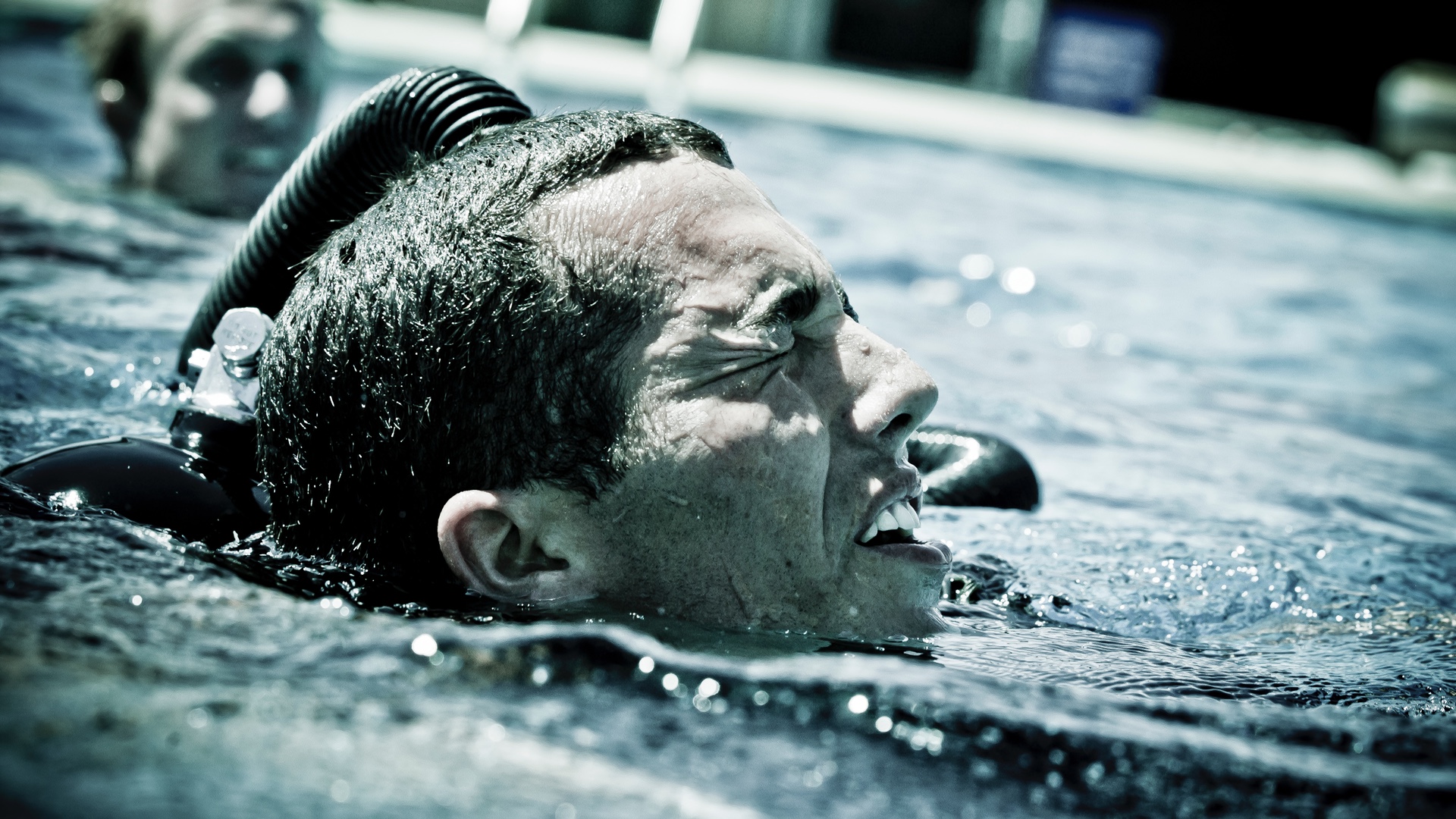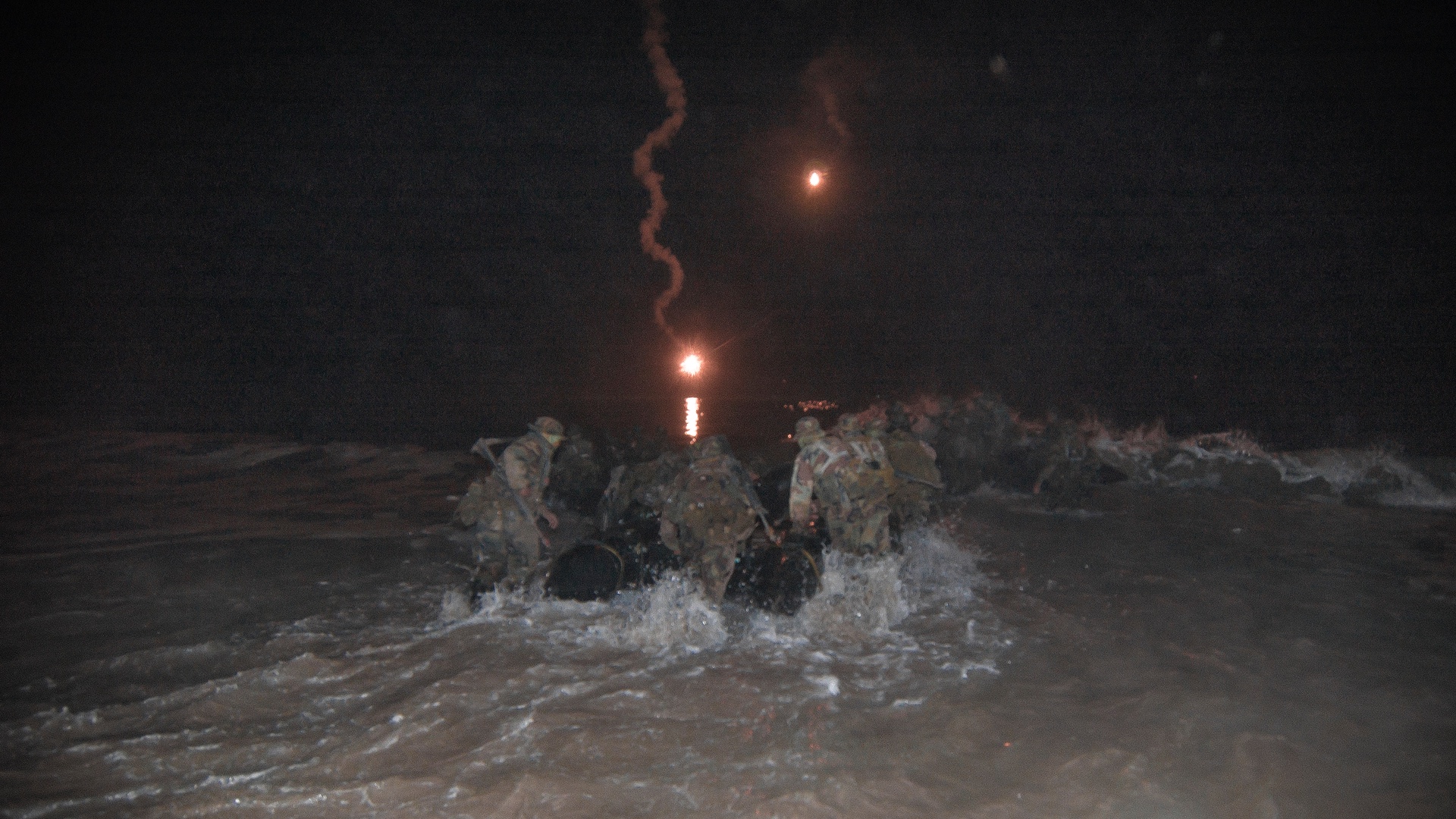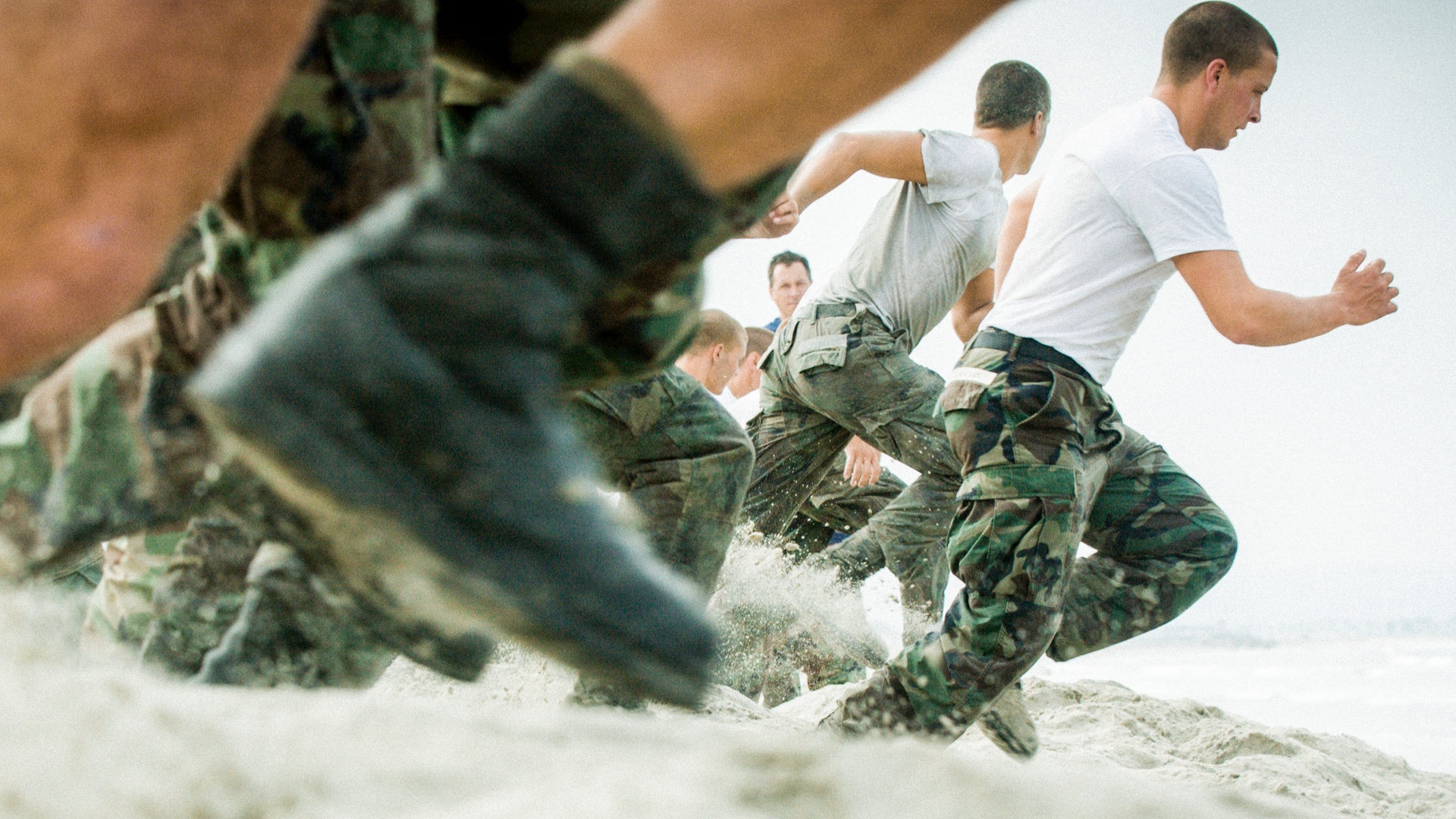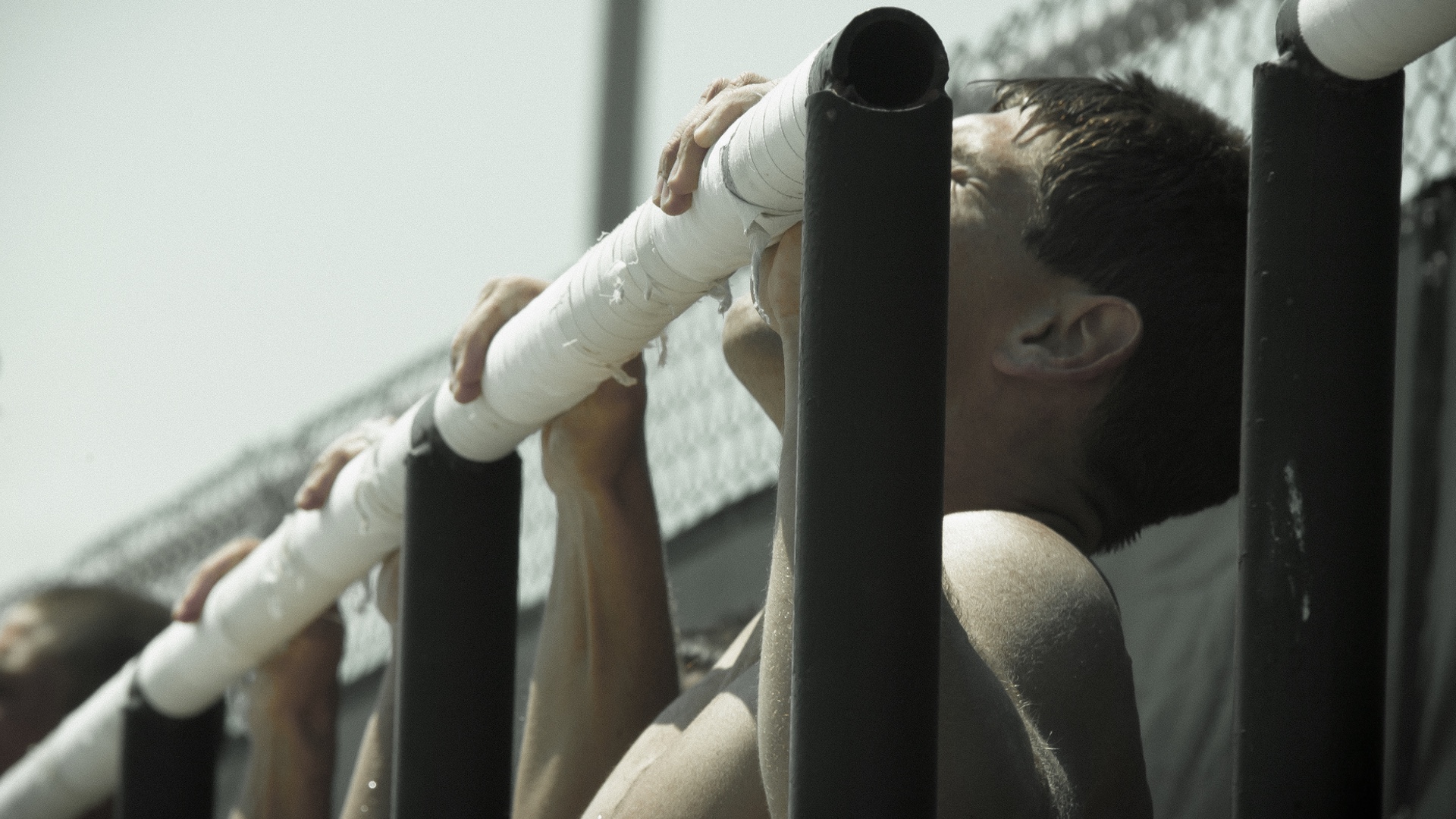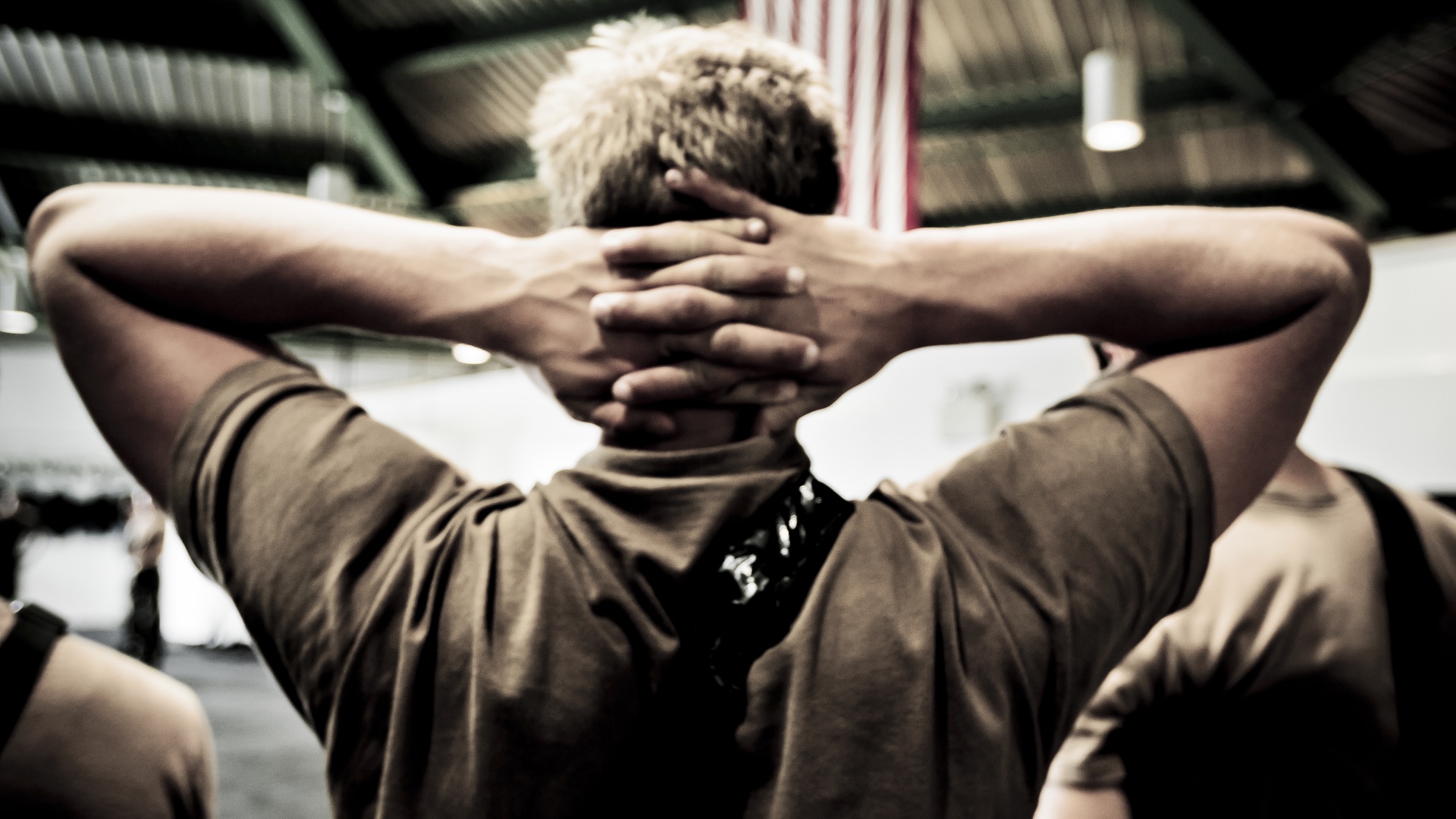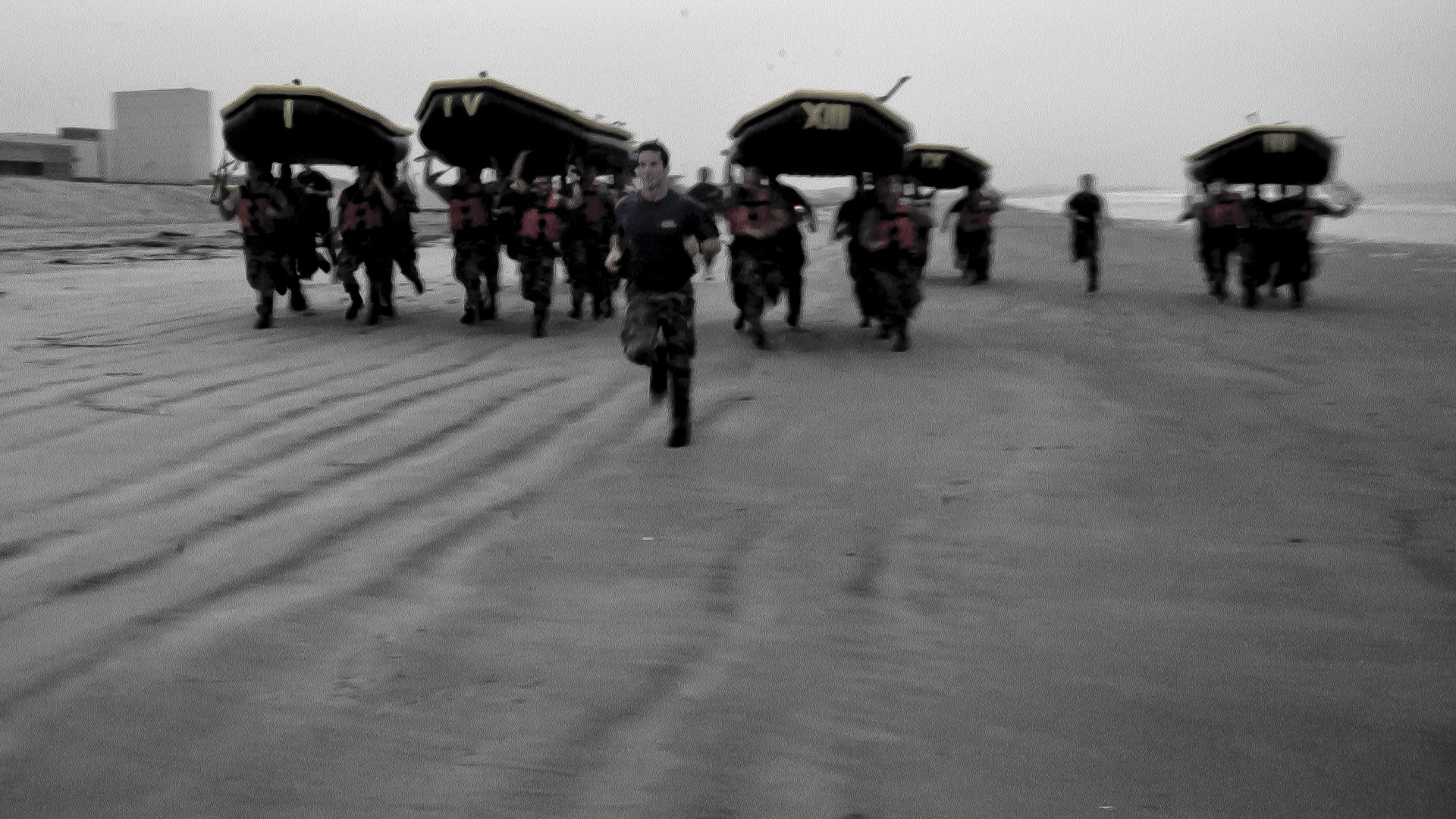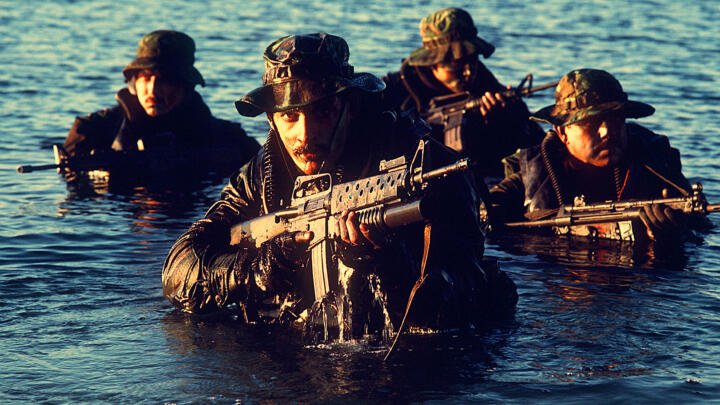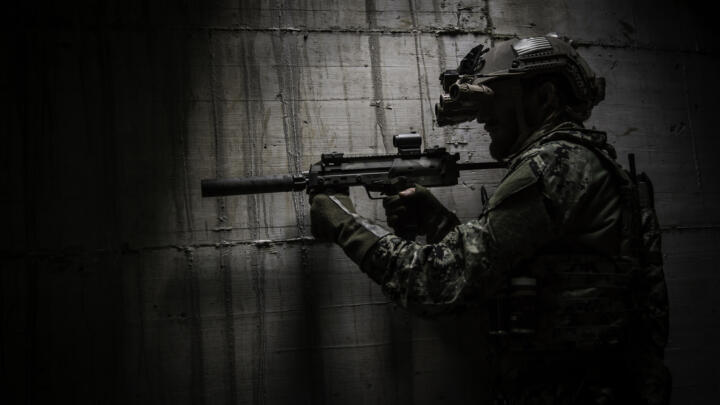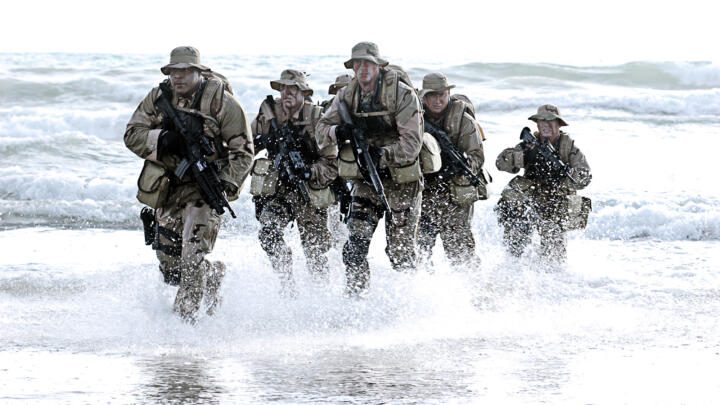It was a sunny Thursday in March when Tim Jones (Editor’s note: name changed to preserve requested anonymity) jumped into a rubber boat with six other SEAL candidates for what should have been a relatively simple task: paddling eight miles along the southern California coast to Navy SEAL training headquarters in San Diego. The trip quickly turned into a nightmare.
The current seemed to be pushing against them, making it feel like they were barely moving, and they were trailing the other boats in a race that guaranteed extra exercises for the losers. But those were the least of Jones’ problems. He had already been awake almost continuously for four days, pounding out endless rounds of push-ups, timed runs, cold ocean plunges, heavy lifting and a battery of mind games. Occasionally, during the chill of the previous three nights, he had been allowed to stand still by a fire. But he was usually cold, wet and forced to remain just outside its tantalizing ring of warmth. Ninety-minute naps were always shattered by chaotic wake-up calls filled with shouting, gun blasts and flashing lights. Those disorienting jolts out of deep sleep would haunt his dreams and yank him awake for years afterwards – even as he would eventually go on to the next level as a member of the most elite subset of SEALs: the U.S. Naval Special Warfare Development Group, or DEVGRU, also known as SEAL Team Six.
Now battling the mid-day current on his fourth day without any real sleep, Jones was the coxswain and officer in charge of his boat. After just three months in the Navy, he was responsible for the team and for steering. But every time he rested his paddle in the water to rudder, he fell asleep. His crew screamed at him. He dozed off. They screamed louder. The boat veered out toward sea. Amidst it all, he simply could not stay awake.
An inner voice gnawed at him. “I’m not succeeding here,” it said. “This isn’t working.” He continued to struggle even as he took action, switching places with a teammate so he could paddle instead of steer for the remainder of the nearly four-hour trip. When they finally made it back to Coronado – the base for Basic Underwater Demolition/SEAL Training (BUD/S) – he collapsed on his bunk in tears, he says, “just sobbing from the stress of letting myself and my boat crew down.”
This was just one particularly low moment during Hell Week, a five-day assault on physical and mental limits that spits out more than 75 percent of those who try to make it through. And it was a moment of truth for Jones, who joined the Navy to fulfill a scholarship requirement after graduating from a university in California, and then applied to become a SEAL, eventually persevering through another grueling – and far more technical and intense – round of training to qualify for Team Six. Quitting would have been the easiest choice. Instead, he finished crying. Then, he got up and returned to the beach, where he jumped in the ocean, rolled in the sand, and surged to the front of the pack in another timed run.
It wasn’t the only time that doubts would push Jones to the edge, and he says, his mental struggles were always worst during relatively quiet times – like his barely conscious paddle, when the weather was calm and the boat teams got a rare break from the yelling of instructors, who stayed on shore. One of his lowest lows struck during a 2 a.m. plunge into an outdoor swimming pool, where he was ordered to huddle with his teammates for half an hour without moving. In those moments of stillness, his mind would wander. “I’m as miserable as I’ve ever been,” he would think. “I don’t know if I can do this.”
“That’s when everything stops, you get inside your head and realize how miserable you are,” he says. “That’s when people quit.”
So why didn’t Jones quit?
It’s a question the Navy would love to answer. Most candidates who try to become SEALs (members of the U.S. Navy’s elite Sea, Air, and Land Teams) fail to make it through – adding up to a lot of time and taxpayer dollars to identify who will persevere through a year of brutal training, followed by years of commitment to extreme and often dangerous military missions.
That commitment takes on another level of intensity for SEALs like Jones who enter Green Team, the training program for Team Six. Unlike BUD/S, Green Team targets a more advanced skill set that includes jumping out of stationary airplanes at altitudes as high as 30,000 feet; complex group SCUBA diving mission at night that test the limits of air tanks; surgical shooting while storming into buildings in the darkness; and training with live fire instead of simulated ammunition. A high level of performance is expected from the start. Half of SEALs who try to make Team Six fail – even after they’ve excelled for years on regular SEAL teams.
And while the Navy has collected tons of data on what successful SEALs share in common and which psychological factors are most likely to cause failure in the early stages, success in BUD/S has been harder to predict, says Eric Potterat, a retired Navy Commander and former head psychologist for SEALs, who now works with professional sports teams. His work led to the implementation, in 2009, of the first “neck up” assessment of prospective SEALs in the form of a computer survey that was 98 percent accurate at predicting who, among those with the slowest run and swim times, would not get past Hell Week.
But research has yet to hit on a psychological profile, personality type or family background that can identify those who will persist to become one of the toughest warriors on the planet. Even SEALs themselves can’t always explain what drives them to pursue a path that seems impossible to most and remains out of reach for the majority of people who try to get in. Most won’t even talk. The SEAL community is tight-knit and often secretive, particularly when it comes to Team Six.
It is in their moments of truth, like Jones’s battle in the boat, when SEALs offer a glimpse into what makes them keep going through the kind of pain, fear, chaos and despair that would crush most of us. Their motivations often defy stereotypes. It’s not love of country, Jones says, that makes a man choose to shiver uncontrollably in the middle of the night or pursue a career that repeatedly puts his life at risk.
What kept him going from BUD/S through Green Team and beyond, he says, were the guys depending on him and the job that needed to get done. He had heard stories of boat teams that fell like dominoes during Hell Week: when one guy quit, the rest followed. Whenever his own doubts surged, he fought back. “I can’t quit now,” he forced himself to think. “I’ll quit later.”
That kind of determination is universal among SEALs, Potterat says. Over a decade of working with SEALs, he says, he marveled at three unique qualities: their resilience to adversity, their desire to exceed limits, no matter what, and their relentless search for an edge.
“The SEAL mindset is unlike one I’ve ever seen in any other community,” he says. “They’re constantly thirsty for getting better. They’re never satisfied. It’s not like they hit the ceiling of their potential and are like, ‘I’m good to go.’ That’s a rare attribute, and every SEAL I’ve seen has it.”
Nobody knows if they have what it takes to be a SEAL until they try, and only when they’re in the middle of unpredictable challenges do they reckon with their reasons for being there. Before Don Mann entered BUD/S in 1982, he spent more than four years training for it. He ran 30 marathons in 36 months, and competed in Ironman triathlons and multi-day adventure races. With no patience to keep studying after a year of college, his mind became set on becoming a SEAL. He wanted to serve his country, escape his New England childhood, and see the world. He didn’t have a backup plan.
“Going around the world, supporting our country on missions, being with the toughest guys in the world — I was positive there was nothing else I wanted to do,” says Mann, 59, a former Navy SEAL Team Six Operator and author. “I never wanted anything so much in my life.”
In the early weeks of BUD/S, he found himself in the pool with his feet tied together and his hands bound behind his back. With each struggle to the surface for air, he heard the sounds of his classmates gasping and coughing. When one recruit tried to cheat by resting his head on a rope, the instructors whacked his forehead with an aluminum pole. Mann watched as the cheater then sunk to the bottom of the pool, seemingly lifeless. “I remember thinking, ‘This is so hard-core,’” he says. “They just killed him, and we’re still in here.’”
As the guy was rescued, resuscitated and kicked out of BUD/S for cheating, Mann became more determined. Then came his own closest brush with failure, when he was told to flip off the deck into the deep end and then swim underwater for two lengths of a 25-meter pool without coming up for air. On his way back after the turn, he says, he felt like an ice pick was stabbing him in the head. As the pain intensified, he lost control of his mind. “I can’t do it, I can’t do it, I can’t do it,” he thought before shooting to the surface. He couldn’t believe it. “I wanted nothing more than to be a SEAL. As soon as I shot up, I realized I just blew my chances.”
But he got another chance, and this time, he thought only about how badly he wanted it. He had already emerged from a restless adolescence, full of motorcycle racing and trouble making. Inspired by his dad, a World War II vet, and with a background in extreme adventure sports, he was drawn to the pure physicality of SEALs. And he was driven to succeed at what he saw as the toughest challenge he could take on.
When the ice pick began to stab yet again, he welcomed the pain, eventually passing out and getting dragged to the surface, foaming at the mouth. His willingness to ignore the need to breathe, he says, came not from big picture goals but from thinking only about the task in front of him. “During those times, I don’t think of the patriotic feeling or of being a SEAL,” says Mann, who would eventually hone a non-conformist and norm-rejecting attitude that, he says, defines the guys who end up on Team Six. “It’s just ‘I can’t wait for this thing to be over. But no matter how miserable it is, other people are doing it, so I can do it.’”
Gaining acceptance into an exclusive community can be a powerful motivator, adds Kirk Parsley, who left home in rural south Texas at age 18 after becoming obsessed with a video about Navy SEALs in 1987. In his past were an abusive stepfather, failing grades and a teacher who told him he was the dumbest kid she’d ever taught. In his future was the potential to show everyone he was worth more than they thought.
“I wanted to make it through and prove I was one of the toughest, most resilient guys in the world,” says Parsley, 46, who did not screen for Team Six, but went on to graduate at the top of his class from medical school. “There was definitely an aspect of being a SEAL to be like, ‘Here, take that.’ Like, ‘I’ve achieved more than you ever have now even though you say all these horrible things about me.’”
BUD/S turned out to be mostly fun for Parsley, whose athletic background included football, wrestling, track, martial arts and boxing. But he had his share of scary moments as a SEAL, including a multinational training exercise in South Korea during his second platoon, when his team took off in a small propeller plane from an aircraft carrier and flew into a mountainous region in the middle of the night.
With each SEAL candidate wearing more than 100 pounds of equipment, their task was to jump out of the plane from 12,500 feet into a drop zone they had never scouted before with no one below to mark the landing. Mountains surrounded them on all sides, peaking as high as 10,000 feet. And snow covered the ground, making the landing uncertain. It was a clandestine training mission, so in pitch darkness, they would jump without light markings.
Parsley hadn’t tested his equipment, and there was plenty of potential for disaster. At 240 pounds, he was big for a SEAL, and with the added weight of his gear, he was close to the parachute canopy’s 400-pound limit. Because the landing was at altitude, the parachute’s elevation-dependent emergency release mechanism was unlikely to work if he passed out or spun out of control. His pack was so heavy and awkward that he couldn’t even stand up in it. Instead, he slid to the open door of the plane and rolled out. His parachute worked but as the men drifted close to the ground, they realized it was littered with old airplane hulls under the snow, making the landing perilous.
In times of extreme fear, Parsley says, he knew he had a clear choice between opening doors and closing them. He could try or to fail without trying. By the time he was serving as a SEAL, all of his self-worth was tied up in the teams. Choosing not to do his job would mean betraying his identity, abandoning his newfound family and giving up his entire support system. During BUD/S training, he and his best friend were so close, he says, he was sure that quitting would have crushed his friend’s dreams, too.
“It was like ‘I’m a SEAL. This is my job. I fought hard to be here and even though I’m really scared by this situation, to not do it would be tantamount to giving up on who you are as a person and everything you’ve accomplished,’” he says. “If you were to quit a mission because it was too scary, it would be so humiliating, you would probably prefer to die. It’s a one-chance community.”
The fear of losing everything never goes away, adds Mitchell Hall, who entered BUD/S in 1991 at age 18 and served as a SEAL for 21 years, including five years at DEVGRU. In 2007, he was awarded a Silver Star after a firefight in Iraq that began with an ambush just as he was about to lie down for a nap. Suddenly, the guy next to him took a round in the face. With a mental flash of his 3-year old daughter and wife at the time, he returned fire and moved to pull a wounded teammate to safety through enemy fire.
“When you get into these critical moments of strategic importance, when the stakes are high for your country or you’re about to capture someone big, what it really boils down to is the training you’ve done and the culture you’ve created and the bond you have with these guys,” Hall says. “This culture drives you to do anything that’s necessary. It’s unforgiving and harsh, but when you’re in it, you know you’re part of something special.”
When it comes to Team Six, timing also plays a role. After about five years in regular teams, SEALs have to be willing to start over and move to the East Coast to screen for a job that entails continuous travel. Having a family or another opportunity can make logistics too complicated.
The SEALs who do push on to Team Six are the ones who can’t shake their determination to become the best of the best. Once there, it’s like being part of the most exclusive varsity team. A SEAL’s personal reputation depends on devotion to that team, says Jones, even if teammates have nothing in common besides their service. “If your reputation is somebody they can’t count on, that’s anathema,” he says. “You don’t want to be seen as that guy who had a chance to step up for the team and chose not to.”

